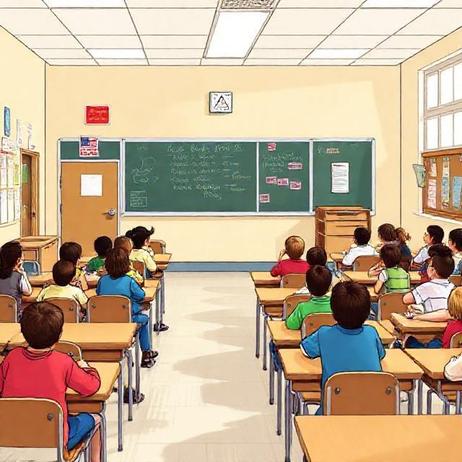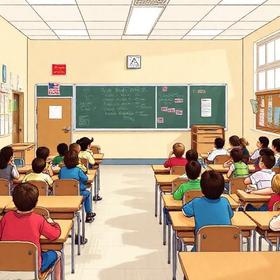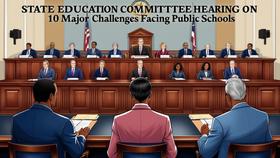Budget Cuts and Class Size: How Real Are the Impacts in Public Education?
Understanding how budget cuts and class size affect public education is central to how communities plan, fund, and evaluate their schools. In 2025, districts continue to navigate inflation, fluctuating state appropriations, pandemic-related academic recovery, and enrollment swings. The relationship between budget cuts and class size has become one of the defining issues for educators and families, influencing instructional quality, teacher workload, and student outcomes.
This article examines how budget cuts and class size interact, what research tells us, what parents should watch, and how districts can mitigate adverse effects. It also provides updated examples, practical insights, and authoritative references to support informed decision-making.
Why Budget Cuts and Class Size Matter
The link between budget cuts and class size appears straightforward. Fewer dollars often mean fewer staff members, which leads to larger classes. Yet the impact is far more complex. Class size shapes instructional time, teacher attention, and the ability to differentiate lessons. When budget cuts and class size rise together, schools face challenges that ripple across academic and social development.
Research consistently shows that smaller classes benefit early learners the most, particularly students from historically underserved groups. Parents can explore district-level trends through resources like Public School Review (https://www.publicschoolreview.com) to assess how budget cuts and class size may affect their local schools.
The Financial Pressures Driving Changes
Several trends are putting pressure on public school budgets, making the relationship between budget cuts and class size more visible in 2025.
1. Declining Enrollment in Some Regions
Many states have seen lower birth rates and shifting migration patterns. When enrollment declines, funding formulas based on per-pupil allocations drop as well, tightening budgets and raising budget cuts and class size concerns.
2. Rising Costs for Special Services
Students require increased mental-health support, individualized interventions, and specialized staffing. With limited funds, districts must decide where to allocate resources, often weighing budget cuts and class size implications.
3. Inflation and Operational Costs
Higher costs for transportation, utilities, food services, and technology reduce the dollars available for staffing. This makes budget cuts and class size discussions more urgent as districts attempt to preserve instructional quality.
How Budget Cuts Influence Class Size
The mechanics of how budget cuts and class size interact typically follow predictable patterns.
Staff Reductions
Personnel account for roughly 80 percent of school budgets. When money tightens, hiring freezes, reduced paraprofessional support, and staff reductions increase budget cuts and class size pressure across grade levels.
Program Consolidation
Electives, advanced courses, and remediation programs may be combined. This pushes more students into the same class time, again heightening budget cuts and class size effects.
Larger Student-Teacher Ratios
Districts may extend student-teacher ratios from, for example, 22:1 to 28:1. Even small ratio shifts compound the impact of budget cuts and class size, especially in reading and math.
What Research Says About Class Size
The long-studied Tennessee STAR project remains one of the most influential studies on class size. Data still informs policy decisions today, reinforcing why budget cuts and class size concerns are not simply theoretical.
Key takeaways that remain relevant:
Classes with roughly 15 students show measurable gains in K-3.
Students from low-income households see the largest benefit.
Teachers report improved classroom management and relationship building.
The Class Size Matters organization (https://www.classsizematters.org) provides additional research for families comparing budget cuts and class size trends nationwide.
Short-Term and Long-Term Impacts on Student Learning
The effects of budget cuts and class size operate on multiple levels.
Short-Term Impacts
Less individualized instruction
Reduced intervention time for struggling students
Greater teacher fatigue
Limited time for feedback on student work
Long-Term Impacts
Wider achievement gaps
Challenges in meeting state academic benchmarks
Lower student engagement
Higher teacher turnover, which reinforces the cycle of budget cuts and class size issues
How Districts Try to Manage Class Size Under Budget Pressure
Not all districts experience the same outcomes when dealing with budget cuts and class size. Successful districts employ strategies that protect core instruction.
Targeted Staffing
Districts may keep class sizes small in early grades while allowing slightly larger sizes in upper grades. This prioritizes early literacy and mathematics, minimizing the impact of budget cuts and class size.
Reallocation of Funds
Some schools redirect funds from noninstructional areas. This can preserve staffing without fully eliminating support services, helping balance budget cuts and class size priorities.
Creative Scheduling
Block schedules, flexible groups, and shared teaching models help districts stretch staff resources. When done well, these strategies soften the effects of budget cuts and class size while maintaining instructional quality.
A Comparative Snapshot
Below is a simplified table showing typical outcomes associated with different class sizes. This helps clarify why budget cuts and class size debates remain central to public education funding.
| Class Size Range | Likely Student Experience | Teacher Impact | Overall Effect |
|---|---|---|---|
| 15–18 students | High individual attention; strong engagement | Manageable workload | Optimal learning conditions |
| 22–25 students | Balanced instruction | Occasional stress | Generally effective |
| 28–32 students | Limited individual attention | High stress; reduced planning time | Noticeable impact of budget cuts and class size |
| 33+ students | Significant instructional challenges | Very high workload | Diminished learning outcomes |
Parents’ Role in Monitoring Class Size
Parents can play an active role in understanding how budget cuts and class size affect their child’s experience. Reviewing data through state report cards and resources like the Private School Review comparison tool (https://www.privateschoolreview.com) can help families gauge whether alternative schooling options might better meet their needs.
Questions for parents to ask:
What is the district’s student-teacher ratio this year?
How have budget cuts and class size changed over the past three years?
Are intervention programs fully staffed?
How is class size distributed by grade?
What steps is the district taking to mitigate larger classes?
Case Study: A District Responding to Enrollment Decline
A mid-sized Midwestern district recently faced a five-percent drop in enrollment. Despite the decline, fixed operational costs remained steady. With fewer dollars, the district:
Reduced elective offerings
Increased average class size from 23 to 29
Consolidated two elementary schools
Parents expressed concern about budget cuts and class size. As a response, the district invested in co-teaching models and added instructional aides in grades K-3 to offset the larger classes. Early data suggests improved literacy gains among early learners, demonstrating that responsive leadership can lessen the impact of budget cuts and class size.
Balancing Fiscal Responsibility and Student Needs
Policymakers continue to debate how to balance budget cuts and class size pressures with academic expectations. Some argue that funds should prioritize early childhood intervention. Others emphasize technology integration, elective expansion, or teacher salary increases to stabilize staffing.
Although strategies differ, most agree that ignoring budget cuts and class size poses risks for long-term student success. Transparent reporting, community engagement, and targeted investment are essential.
Conclusion
The relationship between budget cuts and class size represents one of the most pressing structural challenges in public education. For families, understanding this relationship helps clarify what to expect in the classroom and how to advocate for high-quality instruction.
Districts that respond strategically can maintain strong academic outcomes even when funding tightens. However, the need for sustained investment remains clear. As communities continue to evaluate school budgets in 2025, the discussion around budget cuts and class size will shape the direction of public education for years to come.















